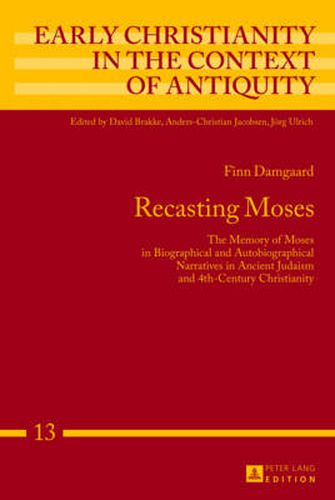Readings Newsletter
Become a Readings Member to make your shopping experience even easier.
Sign in or sign up for free!
You’re not far away from qualifying for FREE standard shipping within Australia
You’ve qualified for FREE standard shipping within Australia
The cart is loading…






This title is printed to order. This book may have been self-published. If so, we cannot guarantee the quality of the content. In the main most books will have gone through the editing process however some may not. We therefore suggest that you be aware of this before ordering this book. If in doubt check either the author or publisher’s details as we are unable to accept any returns unless they are faulty. Please contact us if you have any questions.
The political and social changes that occurred with the transformation of the Roman Empire into a Roman Christian Empire and with the bishops’ new social position as imperial bishops called for new literary representations of the ideal Christian leader. In this struggle, the figure of Moses turned up as a suitable figure intimately connected with questions of authority and power and, related to this, with the risk of dissension and discord. While the portrait of Moses as a political figure was hardly applicable in Christian discourses of the 2nd and 3rd centuries, it became the centre of interest during the 4th century. This new emphasis was, however, no more new than that it actually revived traditions of 1st-century Jewish biographical and autobiographical narratives.
$9.00 standard shipping within Australia
FREE standard shipping within Australia for orders over $100.00
Express & International shipping calculated at checkout
This title is printed to order. This book may have been self-published. If so, we cannot guarantee the quality of the content. In the main most books will have gone through the editing process however some may not. We therefore suggest that you be aware of this before ordering this book. If in doubt check either the author or publisher’s details as we are unable to accept any returns unless they are faulty. Please contact us if you have any questions.
The political and social changes that occurred with the transformation of the Roman Empire into a Roman Christian Empire and with the bishops’ new social position as imperial bishops called for new literary representations of the ideal Christian leader. In this struggle, the figure of Moses turned up as a suitable figure intimately connected with questions of authority and power and, related to this, with the risk of dissension and discord. While the portrait of Moses as a political figure was hardly applicable in Christian discourses of the 2nd and 3rd centuries, it became the centre of interest during the 4th century. This new emphasis was, however, no more new than that it actually revived traditions of 1st-century Jewish biographical and autobiographical narratives.